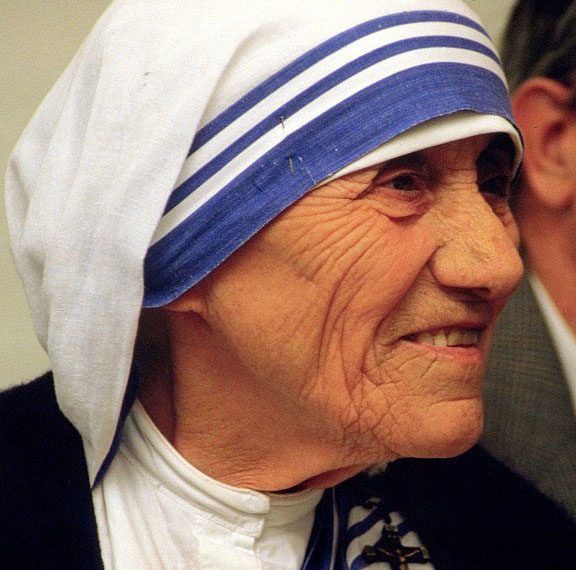Video by Jess Tennett and Moira Prior

Mother Teresa has preformed two miracles for the sick in her lifetime which is the number of miracles required for sainthood. In 2002, Mother Teresa healed an Indian woman’s cancer of the abdomen, and in 2008 she healed a Brazilian man of numerous brain tumors.
In December of 2015, Mother Teresa’s second miracle was recognized by Pope Francis which started the process of her being recognized as a saint.
Father Carl F. Janicki, director of campus ministry, said, “One of the best definitions of saint I have heard is ‘a sinner who keeps trying.’”
“She is a good choice and will be a good saint moving forward for people who will have a devotion to he and other people who may not be familiar with who she was when she was alive would be inspired and motivated by her story,” Janicki explains. “I think people have misunderstandings about saints. Saints are not perfect people. They are people who use their gifts and talents to the best of their abilities to love God and love their neighbor and she did this in a very unique and particular way.”
Eric Lodi, a junior religious studies major who is studying for priesthood said, “By her example to serving the poor and in need especially during this Jubilee year of Mercy called by Pope Francis gives us the courage to not be afraid and remember the words of Saint Mother Teresa, ‘I see the face of Jesus serving the poorest of the poor.’”
Throughout Mother Teresa’s life she worked to serve “the poorest of the poor.”
“Cloister nuns were not allowed outside the convent walls, but Mother Teresa heard the voice of Jesus say to her, ‘I Thirst.’ She tried secretly to take as much food as she could from the kitchen and went outside to feed the poor,” Lodi said. “Throughout her vocation she ‘saw the face of Jesus in all those who were in need of care’ and was ‘simply a pencil in God’s hands.’”
While becoming a saint is a huge accomplishment in the church, there have been some controversy over whether Mother Teresa’s miracles were real. To be considered a miracle, in Mother Teresa’s case, the disease or sickness must have been proven to be incurable.
“I know the church goes to great lengths by using an independent medical panel to determine that the experience of healing has no medical explanation,” Janicki said. “In the absence of medical intervention the sick person or the sick persons family turns to prayer. In the one miracle, they turned to prayer in the intercession of Mother Teresa.”
Another misconception some have it that when seeking help through prayer, one would pray to a specific saint.
“I think prepositions are important because we don’t pray to Mother Teresa, we pray through Mother Teresa,” Janicki explains. “We pray to God through Jesus, but we don’t pray to saints, so prepositions matter.”



